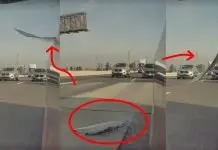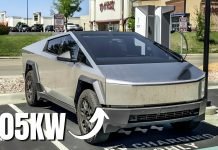A recent case in Sète, France, highlighted some of the risks associated with over-the-air (OTA) software updates on a Tesla vehicle. In a seemingly shocking incident, a motorist was left ‘stranded’ in his Tesla self-driving car for about 45 minutes while the vehicle received an update on the road on August 21.
The situation not only left the driver stuck but also caused a massive traffic jam that stretched to the Virla Bridge. Around a hundred passengers were forced to disembark from buses at the Dauphin Pass.

Tesla’s OTA Update Leaves Driver Stuck in Traffic for Nearly an Hour
The motorist had parked on one of Montreal Province’s streets, known as Grande Rue Mario-Roustan, right in front of a food joint called La Cave à Manger restaurant when the update began. He attempted to move the vehicle once the installation started, but the car became non-functional during the update process.
It appears that Tesla has a safety policy in place that prevents the vehicle from being driven during updates. However, this left the driver unable to move for nearly an hour, significantly worsening traffic in the area.
Tesla’s Update Protocol
Tesla’s OTA updates are designed to improve vehicle performance and add new features, without requiring a trip to the service center. However, these updates can sometimes take longer than expected. Tesla states that drivers are alerted two minutes before an installation begins, allowing them time to park safely.
In this specific case, it’s possible that the driver either didn’t see the warning or ignored it, perhaps because they were unfamiliar with how Tesla vehicles function. Additionally, some Tesla users have mentioned that while they can drive during the download phase of an update, once installation begins, the vehicle cannot be driven.
Previous Incidents and User Experiences
This isn’t the first time such an issue has occurred. A few months earlier, another Tesla owner reported being stuck in their car for 40 minutes due to a software update. These incidents raise questions about how well users understand Tesla’s update process.
While Tesla’s website clearly states that the vehicle must be parked for installation, the question remains: are all drivers thoroughly acquainted with these guidelines, or do some overlook them during their daily activities?
Tesla owners should plan updates for times when they know their vehicle won’t need to be in motion—preferably at home or in a parking lot. This approach not only minimizes the chances of causing traffic jams but also allows drivers to make full use of their vehicle without unnecessary interruptions.
Conclusion
The case in Sète demonstrates how integrating modern automobile engineering into everyday life can present challenges. While OTA updates provide numerous advantages—ensuring vehicles receive the latest features and improvements—they also pose timing challenges for drivers. With the increasing popularity of electric vehicles, it’s essential for drivers to become well-acquainted with these new technologies to avoid disruptions and maximize the benefits they offer.



















Tesla never just updates the cars, they just light up an indicator when there is an update available to install. Only the driver initiates updates, which they can only do when parked. And the car tells you how long it will take, reminds you that the car cannot be driven until the update completes, and you have to confirm that you want to install the update. Then you have a full minute to cancel if you change your mind. If anyone parks in traffic, then chooses to install an update, is told that it’ll take nearly an hour during which time they cannot drive, then confirms it, then ignores the cancel button for a full minute, that is on them. Hopefully they don’t do something that dumb again.